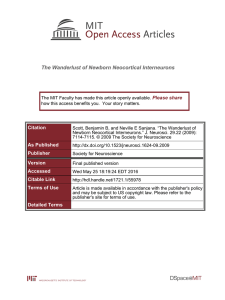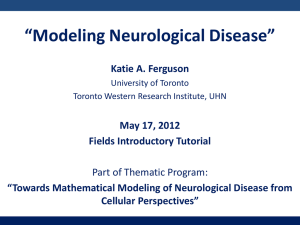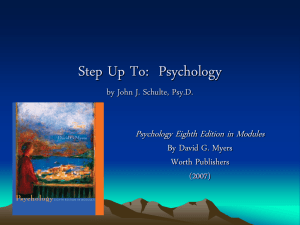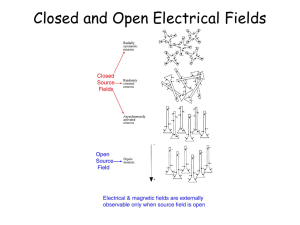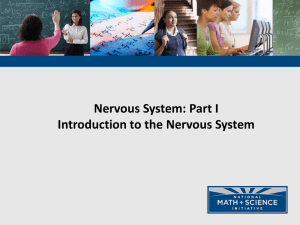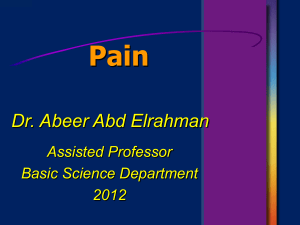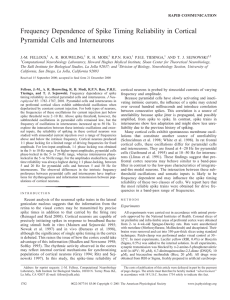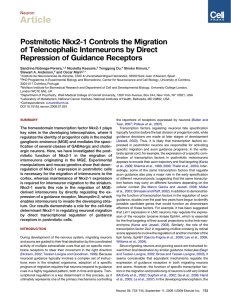Paper
advertisement
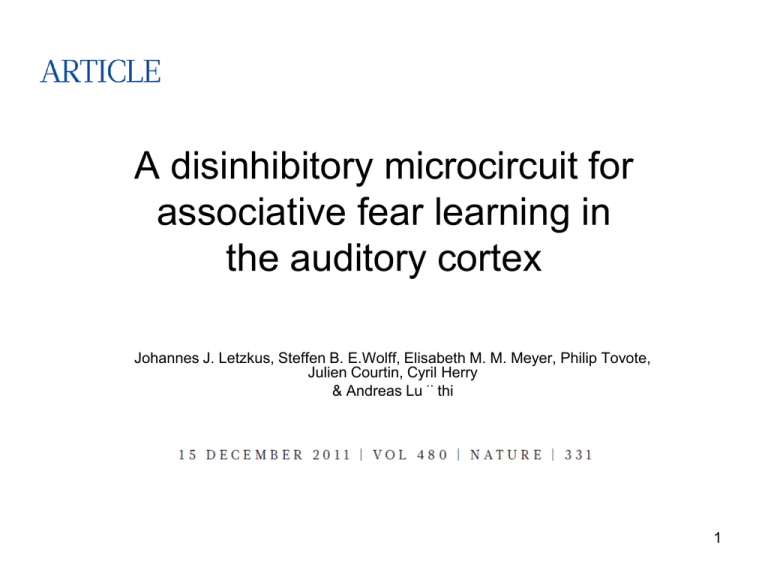
A disinhibitory microcircuit for associative fear learning in the auditory cortex Johannes J. Letzkus, Steffen B. E.Wolff, Elisabeth M. M. Meyer, Philip Tovote, Julien Courtin, Cyril Herry & Andreas Lu¨thi 1 Background Learning Changing behavior 2 Background Learning Changing behavior Neuromodulation Balance of excitation and inhibition 3 Background Fast-spiking PV+ basket cells Different types of interneuron in the layers of somatosensory cortex of juvenile rats "Pyramidal neuron disinhibition is involved in auditory fear conditioning" 4 Background Bilateral destruction of neocortical and perirhinal projection targets of the acoustic thalamus does not disrupt auditory fear conditioning. Neurosci. Lett. 142, 228–232 (1992) Romanski, L. M. The role of auditory cortex in fear memory acquisition is contentious A thalamo-cortico-amygdala pathwaymediates auditory fear conditioning in the intact brain. Eur. J. Neurosci. 24, 894–900 (2006). Kim, J. J. 5 Results The role of auditory cortex in auditory fear learning Activity in auditory cortex is required for fear learning in this paradigm. 6 Results FM-sweep L2/3 Foot shock 7 Results Activation L1 Inhibition 8 Results The afferent pathways mediating activation of L1 interneurons during foot shocks Glutamatergic projections from higher cortical areas Cholinergic afferents from the basal forebrain 9 Results Cholinergic afferents from the basal forebrain Electrical microstimulation of the basalforebrain caused strong excitation of L1 interneurons in the absence of foot shocks 10 Results Glutamatergic peak Nicotinic peck L1 interneuron activation was biphasic 11 Results All L1 interneurons showed responses to nicotine puffs that were blocked by the same antagonists and could fire L1 interneurons 12 Conclusion 1 Activity of cholinergic basal forebrain neurons is both necessary and sufficient to fire L1 interneurons during foot shocks, and that acetylcholine activates nAChRs on L1 interneurons Acetylcholine is released rapidly (<50 ms) after an aversive stimulus. Activation of L1 interneurons in turn is likely to have a central role in fear-conditioning-related plasticity in the cortex. 13 How do foot-shock responses in L1 interneurons affect processing in the local microcircuit? " L1 interneurons can inhibit interneurons in L2/3 during nicotinic activation" Fast-spiking, PV+ interneurons 14 Results L2/3 fast-spiking PV+ interneurons are inhibited by L1 interneurons during foot shocks 15 Results Freely moving animal test Putative Putative interneurons pyramidal neurons The shock removes feed-forward inhibition in pyramidal neurons during auditory input 16 Conclusion 2 L1 interneurons inhibit L2/3 PV+ interneurons Excitation of L1 interneurons by aversive stimuli serves to remove both spontaneous and feed-forward inhibition provided by PV+ interneurons to surrounding pyramidal neurons 17 Results Disinhibition is /is not the main effect of foot shocks in L2/3 pyramidal cells? Inhibition of PV+ interneurons is a dominant influence shaping foot-shock responses in pyramidal neurons 18 Results How does sensory input interact with foot-shock-mediated disinhibition? Calcium image Foot shocks cause a strong enhancement of the calcium signal integral Freely moving recording coincidence of tone and shock excited putative pyramidal neurons much more than tone alone Tone/shock compounds elicit much greater activity than tones alone 19 Conclusion 3 L2/3 pyramidal neurons are disinhibited by aversive stimuli via inhibition of PV+ interneurons. Cholinergic afferents from the basal forebrain PV+ Aversive stimulation, FS CS 20 Results Does this circuit contribute to the fear learning? 21 Conclusion4 Nicotinic disinhibition of the auditory cortex selectively during foot shock is required for associative fear learning 22 Discussion Disinhibition of pyramidal neurons by foot shocks probably gated the induction of activity-dependent plasticity in the auditory cortex and at cortical afferents to the amygdala. Cholinergic activation of L1 interneurons may also contribute to memory expression, because basal forebrain neurons acquire a conditioned response during learning. 23 24 Thank you 25
